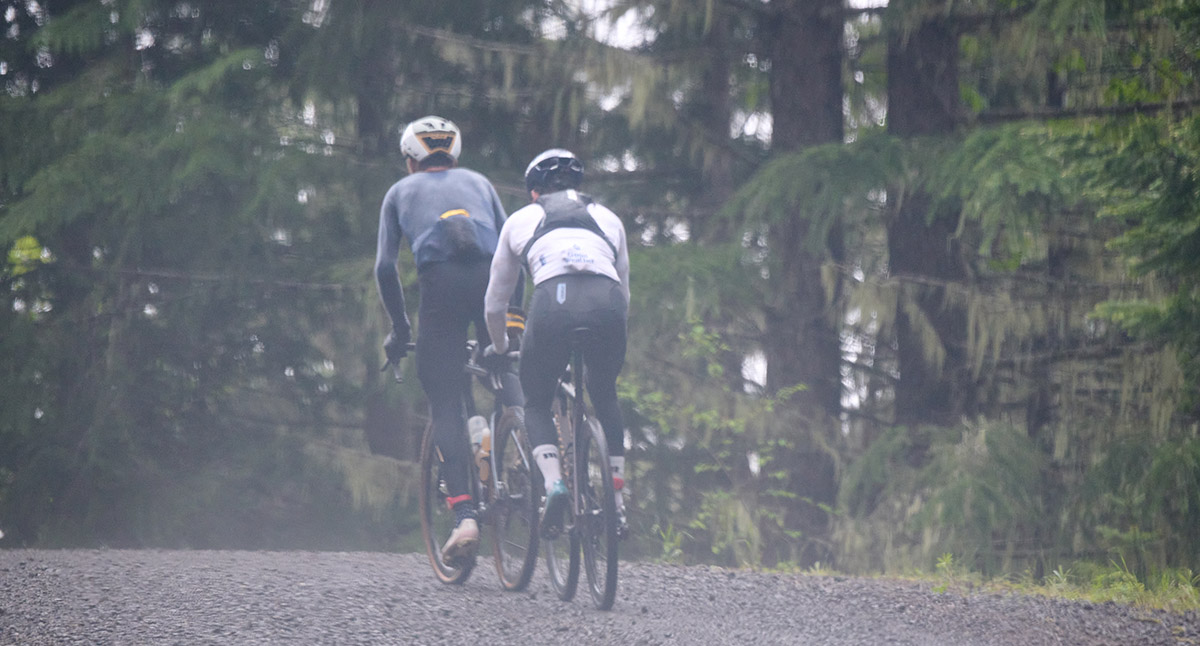Ted King’s Impressions from Bon Jon Pass
Ed.: We invited Ted King to the Bon Jon Pass Out gravel race to show him a part of the local gravel racing scene in the Pacific Northwest. Despite the weather—showers and even sleet all day—a lot of fun was had by all. Here are Ted’s impressions from the race, the course and the atmosphere:
As a proud New Englander, I often boast of the dynamic style racing on either side of the country, as compared to the Midwest that hosts most of the big gravel races. This is courtesy of the ground on which we’re riding and the types of roads. Grid-structured roads in middle America are perfect for 100- or 200-mile races where horsepower and aerodynamics are two dominant characteristics for doing well, whereas there’s quite a bit more bike handling required on the sinuous roads where the topography is a bit more varied. There’s lots of truth to the expression, “once you look, there’s gravel (nearly) everywhere.” It’s great to make the most with what we’re provided.
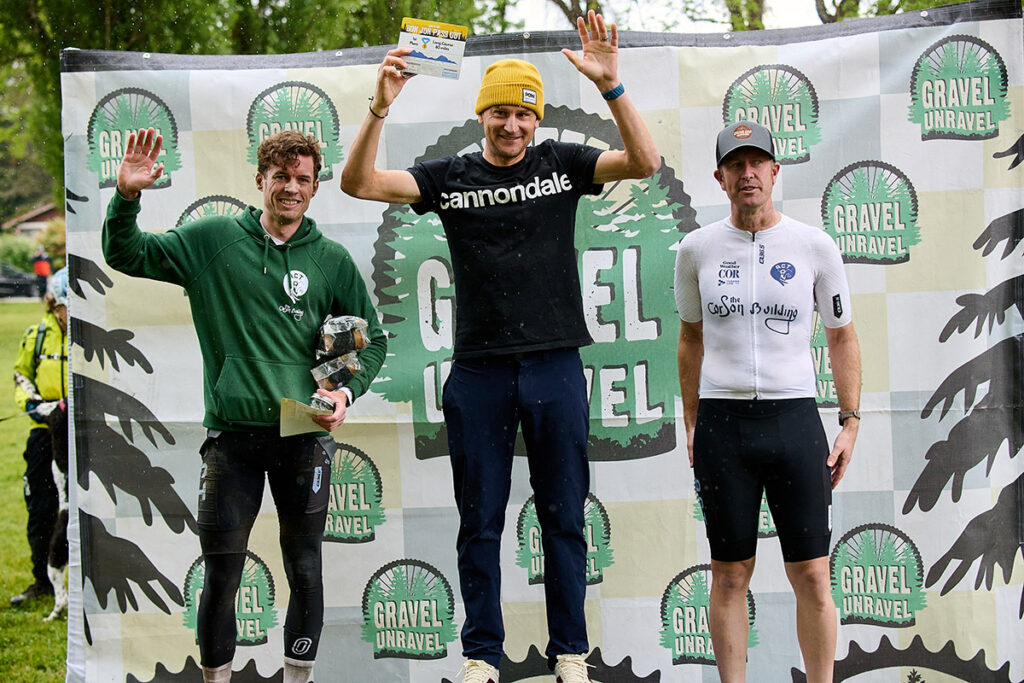
So it was a worthwhile trip to the Pacific Northwest last weekend, where I got to see another sliver of this planet I wouldn’t otherwise know. It was capped off by a bit of a frenetic finish of the Bon Jon Pass Out race. It turns out that staying on site a day before the race allowed for some inside info on just where the finish line turn existed. A very fun day out exploring the Olympic Peninsula with a race number on my handlebars!
I had pre-ridden the shortest distance, the 30 mile race, the day before the race, and, boy, was I impressed! I was also blown away by the challenge. Especially while trying hard to keep the powder dry for the next day’s competition, the first climb up towards Bon Jon Pass was just so long! I think it was approaching two hours for me to spin up the climb, topping off a bit shy of 4,000 feet, all the way from sea level.
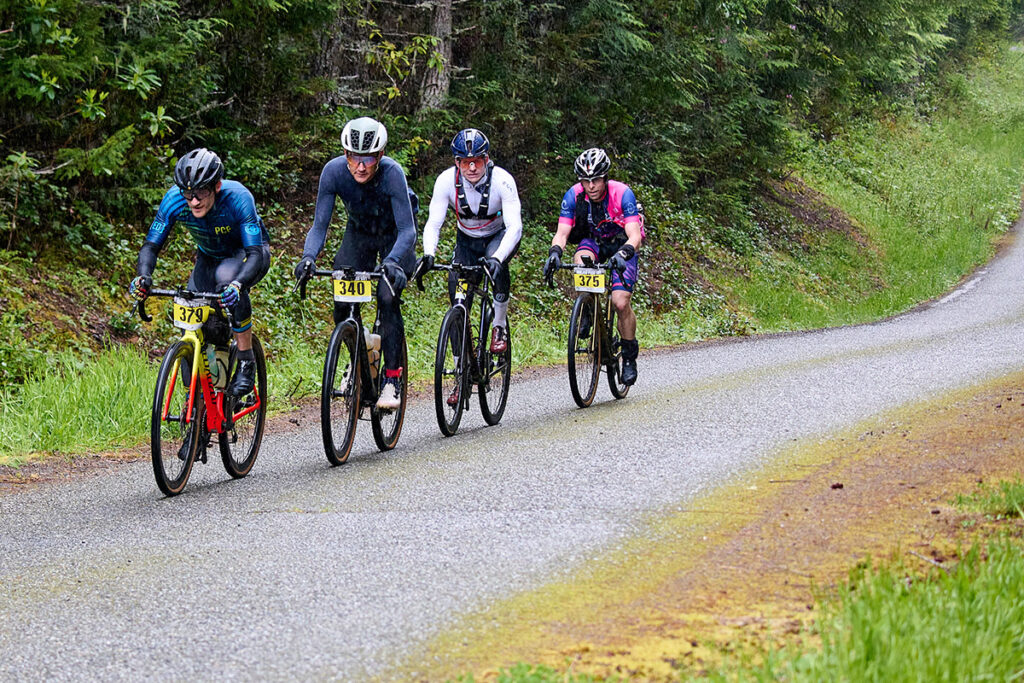
That was a straightforward challenge, and I knew the climb would shake up the group just a few minutes into the race. It did: We had a strong quartet up the first hour long climb towards Bon Jon Pass, then Mark Laughery pulled the two of us clear over the summit. The gravel roads were in really good condition over the top, but then we entered a rough double-track section around mile 25 that required you to really pay attention. It was a 4×4 track that started pretty tame, but then presented plenty of challenges over the next nearly three rough miles. Rain throughout the weekend made that section sloppy and slippery, with plenty of whoops and dips. Despite some cold fingers at this point of the race—which isn’t the best for bike dexterity and fast braking or shifting—that double-track section was really hard to beat for fun.
The whole day you had to be on your toes… The screaming fast descents had wheel-eating potholes which would end your day badly if you weren’t paying close attention. All the more difficult with mud splattering up from your front tire at high speeds. Then we reached a remote valley in the far reaches of the course, which was bucolic and just stunning. The sun popped out for us at that point, just at the right time because my breakaway companion Mark and I were both shivering from the long cold descent. Then, with most of the climbing done for the day by the half-way point, it was just a motoring race to the finish line, which was decided by just a few seconds between us.
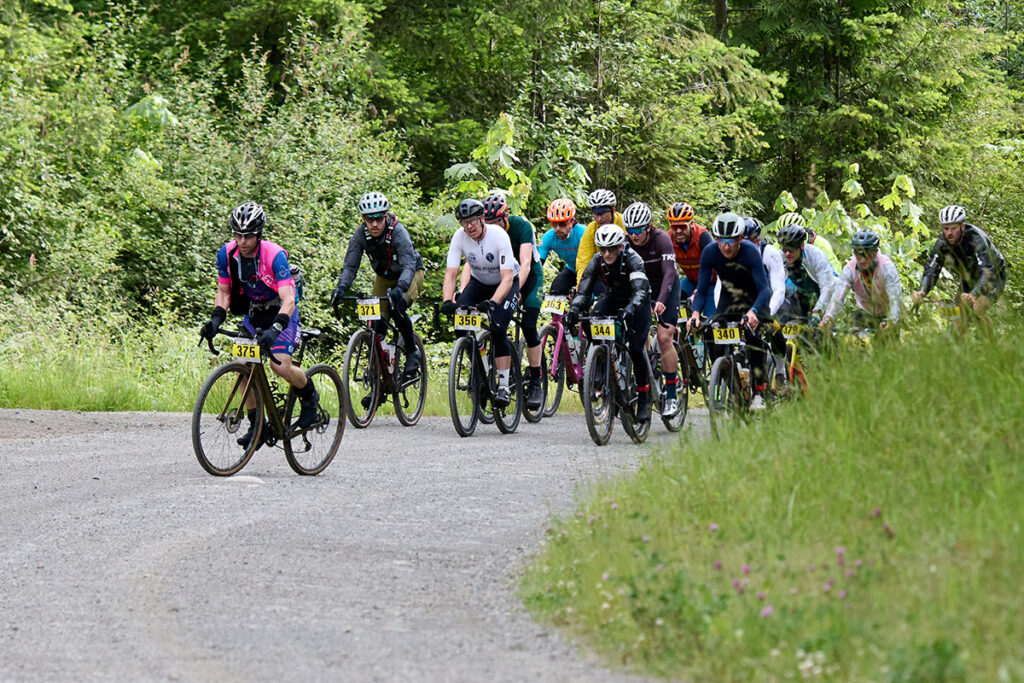
The field wasn’t huge at Bon Jon Pass Out, but I’m a believer that there are strong riders anywhere you go. Immediately on hitting the lower slopes of the first climb out of the gates, I knew I had to pay attention because plenty of folks were eager to pick up the speed just as the gradient ticked up. In fact, I set my best 60-minute power for the year thanks to that section! After twenty minutes or so of going up, the peloton was shredded to just four riders taking pulls for the next forty minutes. Then Mark from an aptly named A Cycling Team pushed it even harder over the very top, which secured our lead duo for the day. He was powerful and fun to chat with briefly throughout the day; all of our breakaway riders were strong; heck, the entire peloton was brave to show up despite the less-than-optimal conditions.
In fact, after the climbing, I think the next-biggest challenge was just what to wear for the day. It’s all well and good to be damp and get some sprinkles down at sea level, but when you’re up at 4,000 feet and in an entirely different climate, you really need to be prepared for the elements. So with a questionable forecast for the day, with a sky simultaneously scattered with bright sunshine and dark rainclouds, it was a tough day to dress just right.
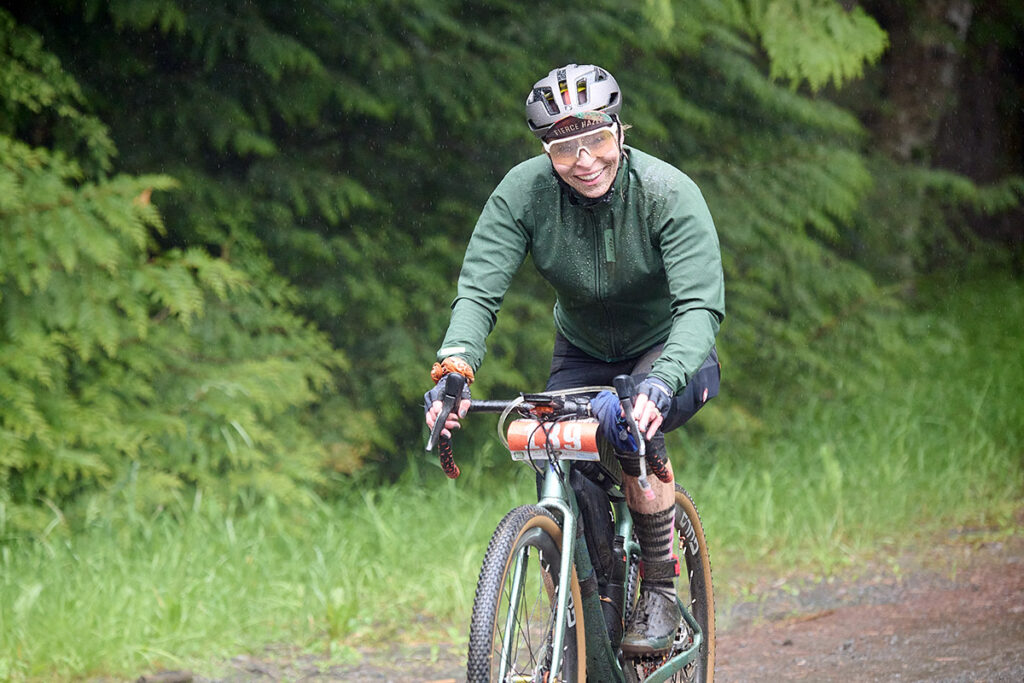
There’s a common thread to gravel riders. We’re there because we love it. We love riding, we love racing, we love being out there for the challenge. So whether you’re at Unbound or the world championships or exploring the Pacific Northwest, everyone is out having a good time.
The Gravel Unravel series is very grassroots—even though I’m not sure what defines grassroots as it relates to gravel. Is it the number of registrants? Is it quantity and quality of amenities? Is it the size of the expo? Is it a feeling? I think it’s a combination of these things, but ultimately how you feel in the environment, in the event. Without a doubt BJPO is a grassroots event. The people it draws in are there for the event, to enjoy a small town, to have a good ride, and then soak it in afterwards with a burrito or pizza and beer or seltzer. There’s no showiness to this event, just people out having a good time on two wheels.
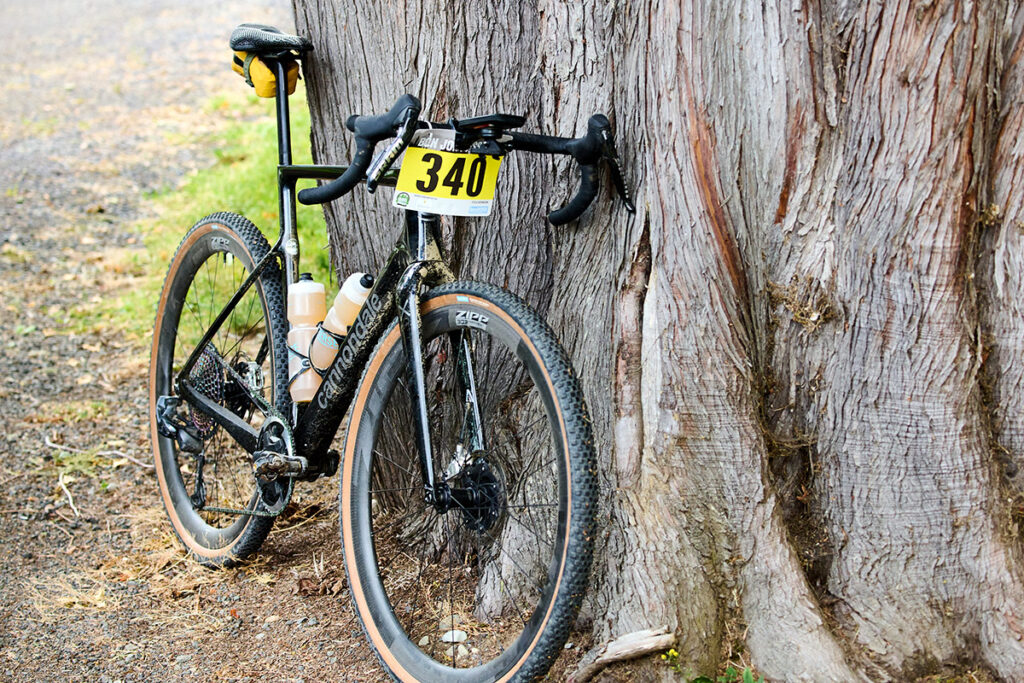
Some riders asked about my setup, and whether I did something special for riding in the Pacific Northwest. I didn’t… I often wonder if people get tired of my pre-race videos breaking down my bike for the event because I rarely make any changes! Having recently come from these races across the plains of middle America, I was excited to swap in the knobbies and went with the 44 wide Manastash Ridge. Running Rene Herse tires, of course this means when choosing tires I’m going either for knobbies or for slicks, and the former imply it’s a more exciting course. 44 is about as wide as I can fit in my frame, and it’s a very confident tire, especially on the lengthier, high-speed descents.
So let’s talk instead about the fueling required for 55 miles and 5,500 ft of climbing. I started the day with a bowl of muesli and banana. Staying in the historic Worthington mansion, it was literally about 20 steps from the back door of my accommodations to the start line, so I could leisurely sip coffee right up until the last minute. I downed a Maple UnTapped packet with about 20 minutes before the start, then had two bottles of UnTapped Mapleaid on my bike, and another 9 packets total in my pockets. I knew we’d be churning through energy in that first hour, so I was consuming my nutrition steadily from the start, also knowing that once we topped out on the pass and started the descent, my fingers would be frigid, and I’d want to keep my hands on the bars as we navigated the potholes and double-track. It’s also rare to do such a short race, so it’s not as though we’re going to bonk or cramp from the outing, but you can certainly see power decline in that time period without the right energy intake. So all said and done, I consumed all of my nutrition and never wanted more or less.
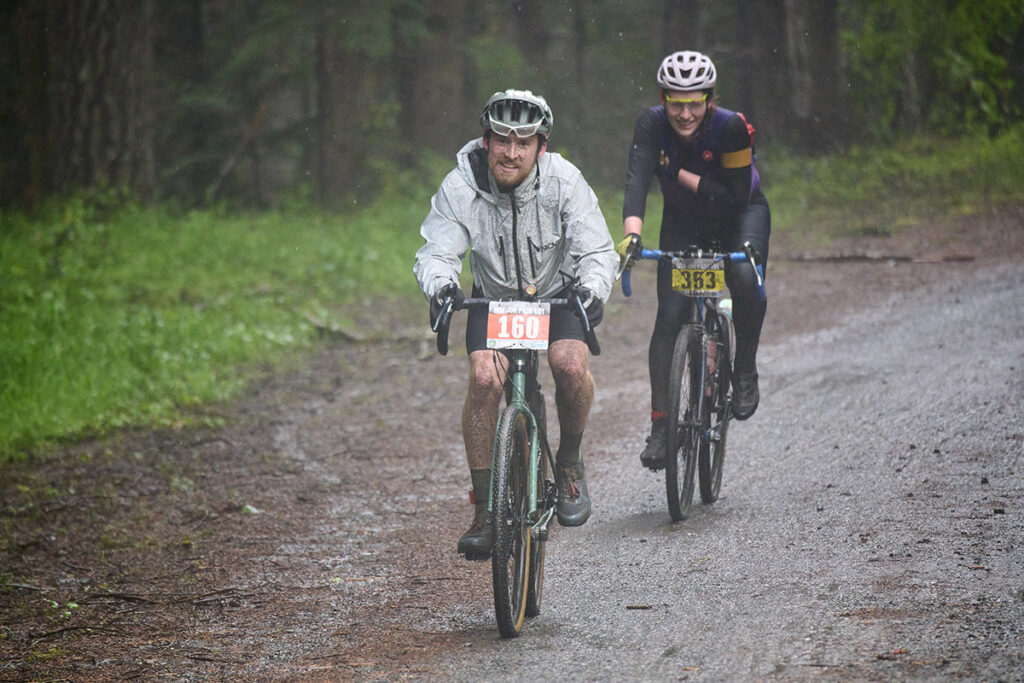
It was great fun to come to Quilcene (population 610) and enjoy a slice of the Pacific Northwest gravel scene. I was impressed by the positive spirit and the endurance of the riders—most finished despite the challenging conditions. Thanks, Lorrie and Buck for putting on such a fun event.
More information:
All photos by Daniel James, courtesy of Gravel Unravel.


